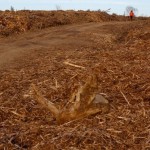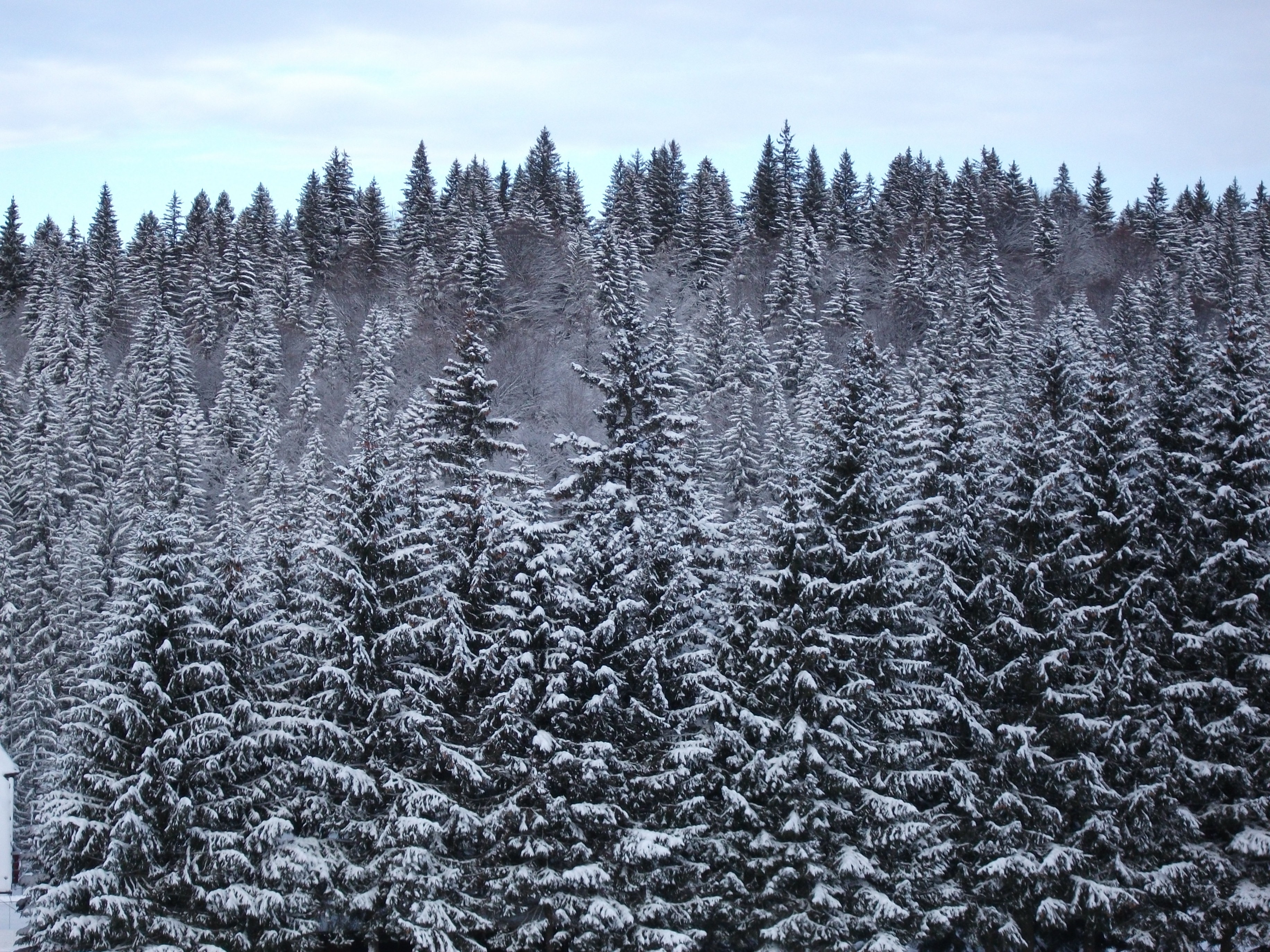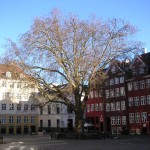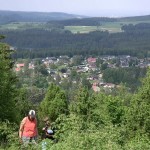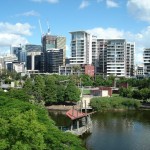The Healing Effects of Forests
 Maybe there’s something to that “hug a tree” idea.
Maybe there’s something to that “hug a tree” idea.
“Many people,” says Dr. Eeva Karjalainen, of the Finnish Forest Research Institute, Metla, “feel relaxed and good when they are out in nature. But not many of us know that there is also scientific evidence about the healing effects of nature.”
Forests – and other natural, green settings – can reduce stress, improve moods, reduce anger and aggressiveness and increase overall happiness. Forest visits may also strengthen our immune system by increasing the activity and number of natural killer cells that destroy cancer cells.
Many studies show that after stressful or concentration-demanding situations, people recover faster and better in natural environments than in urban settings. Blood pressure, heart rate, muscle tension and the level of “stress hormones” all decrease faster in natural settings. Depression, anger and aggressiveness are reduced in green environments and ADHD symptoms in children reduce when they play in green settings.
In addition to mental and emotional well-being, more than half of the most commonly prescribed drugs include compounds derived from nature – for example Taxol, used against ovarian and breast cancer, is derived from yew trees, while Xylitol, which can inhibit caries, is produced from hardwood bark.
Dr. Karjalainen will coordinate a session on the health benefits of forests at the 2010 IUFRO World Forestry Congress in Seoul. “Preserving green areas and trees in cities is very important to help people recover from stress, maintain health and cure diseases. There is also monetary value in improving people’s working ability and reducing health care costs.” she says.
IUFRO Podcast – Interview with Alexander Buck (GFEP Coordinator)
[gigya width=”400″ height=”85″ src=”http://iufro.podomatic.com/swf/joeplayer_v3.swf” quality=”high” flashvars=”jsonLocation=http://iufro.podomatic.com/entry/embed_params/2010-07-14T05_36_57-07_00?autoPlay=0″ wmode=”transparent” menu=”false” allowfullscreen=”true” ]
Watch an Informational Video about IUFRO
XXIII IUFRO World Congress, 23-28 August 2010, Seoul – Republic of Korea (Promotional Video)
Would You Put a Tree in Your Gas Tank?
The world’s forests may provide some unexpected answers as to how mankind can create more value with less environmental impact – good news as we move toward a greener future.
Putting a tree – figuratively speaking – into your car’s gas tank may be the way of the future. Dr. In-Gyu Choi, associate professor in the department of forest science at Seoul National University, will coordinate a session at the 2010 IUFRO World Congress that will look at the future of forest biomass as raw materials for the development of green biofuels and chemicals.
Forest biomass is renewable, abundant and carbon-neutral. Its importance as a future source of green energy and green chemicals should not be ignored, he says.
The session will involve itself with “look-ahead” science – things such as innovative technologies to convert forest biomass into bioalcohol, synthetic gasoline and diesel as well as the future market possibilities for forest-based green chemicals to be used as the raw materials for biodegradable bioplastics. (Plastics from biomass are made the same way as petroleum-based plastics, but are actually cheaper to manufacture and meet or exceed most performance standards with the exception of water resistance and longevity.)
Eco-efficiency – and this session falls under that broad category – aims at the delivery of competitively priced goods and services that satisfy human needs and improve quality of life, while progressively reducing ecological impacts and resource use intensity to a level compatible with the earth’s estimated carrying capacity.
African Forests and People Need to Adapt to Climate Change
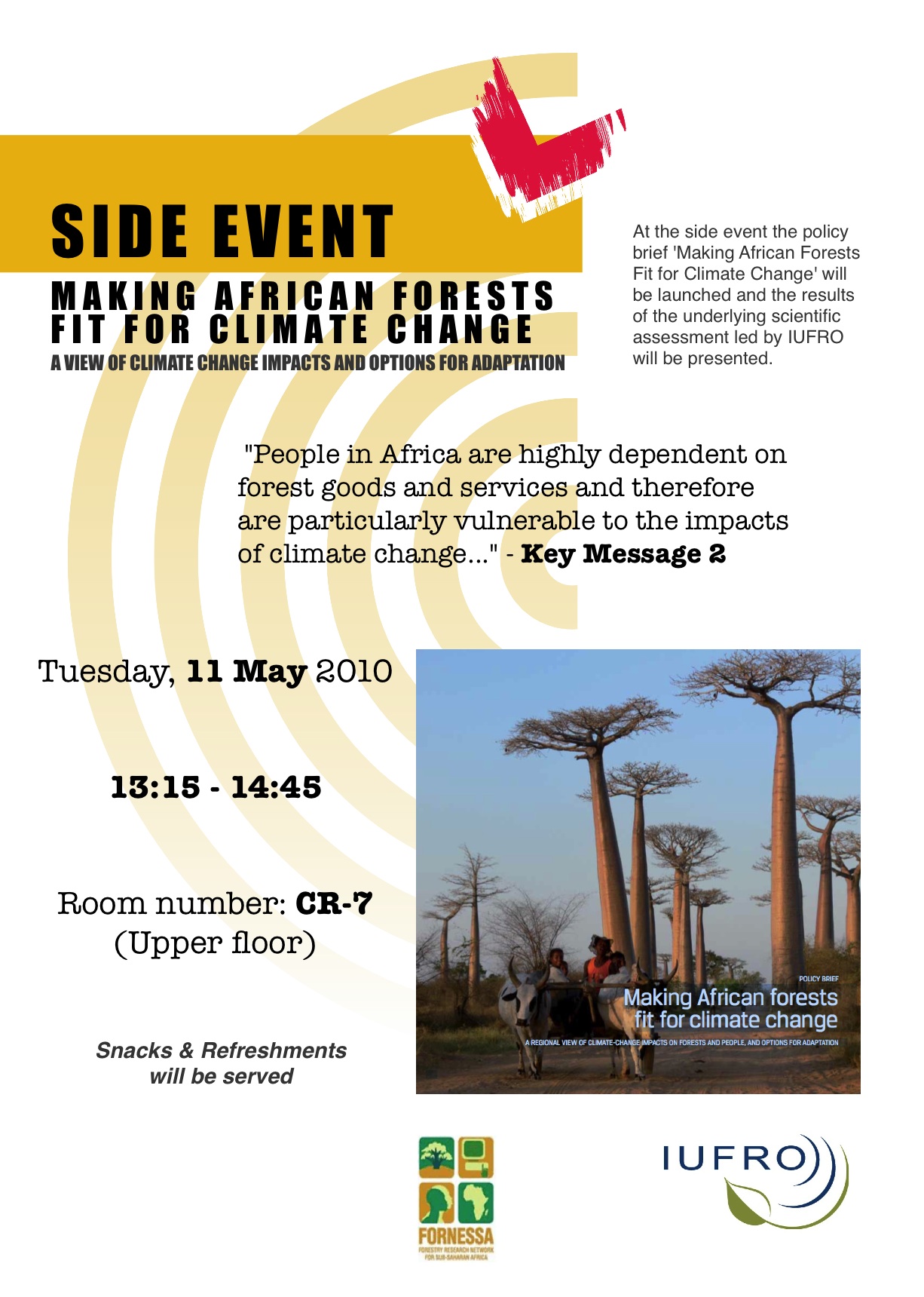 New Policy Brief Takes a View of Climate Change Impacts and Options for Adaptation
New Policy Brief Takes a View of Climate Change Impacts and Options for Adaptation
Average annual temperatures in Africa have risen steadily over the past decades and an even higher increase is predicted for the years ahead. Current climate models project a mean temperature rise of 3–4°C across the continent by the end of this century, which would be approximately 1.5 times the global average increase. Do African forest ecosystems have a chance to adapt to such conditions and can they still provide the vital goods and services that people in Africa so strongly depend on?
Today the International Union of Forest Research Organizations (IUFRO) has launched a Policy Brief that focuses exactly on these questions. The publication with the title “Making African Forests Fit for Climate Change: A regional View of Climate-Change Impacts on Forests and People and Options for Adaptation”, has been presented at the current fourteenth meeting of the Subsidiary Body on Scientific, Technical and Technological Advice of the Convention on Biological Diversity in Nairobi, Kenya. It is the result of cooperation between the IUFRO-led initiative “Global Forest Expert Panels” (GFEP) of the Collaborative Partnership on Forests, the IUFRO Special Programme for Developing Countries (IUFRO-SPDC), and key experts from the Forestry Research Network for Sub-Saharan Africa (FORNESSA).
The Policy Brief underlines the crucial role that African forests play in supporting peoples’ livelihoods. The vast majority of rural populations in Africa rely on woody biomass as an energy source, and some 70-80% of Africans are estimated to depend on plant medicines for their healthcare to name but two examples. Now, however, climate change is putting sustainable development at risk. The achievement of the Millennium Development Goals, especially those related to environmental sustainability and the elimination of poverty and hunger, is threatened. Extreme events such as droughts and floods are expected to happen more often and the projected impacts on forest biodiversity and water quantity and quality will be severe. “Consequently, individuals, societies and institutions should be aware of the likely impacts of climate change on forests and should have adaptation strategies in place to address them”, concludes Dr. Victor Agyeman, Director of the Forestry Research Institute of Ghana and current Chairman of FORNESSA.
Of course, there are still major gaps in knowledge about the impacts of climate change on forests and people in Africa and about how adaptation measures can best be tailored to local conditions. In any case, it will be important to use participatory approaches to obtain a better understanding of local knowledge and perceptions of climate change. Moreover, new modes of governance should enhance effective stakeholder and community participation, transparent and accountable decision-making, and the equitable sharing of benefits. And thirdly, strategies for adapting forests to climate change must be coordinated with those of other sectors and integrated into national and regional development programmes and strategies. In general, climate change is adding to a range of other pressures on forest ecosystems in Africa, such as agricultural expansion and the over-use of forests. “It is obvious that measures that reduce such non-climatic human-induced pressures can help reduce the overall vulnerability of forest ecosystems”, says Dr. Stevy Makungwa, climate change expert at FORNESSA.
These are some of the key messages conveyed by the new African Policy Brief that is based on a detailed analysis of relevant information contained in the global assessment report “Adaptation of Forests and People to Climate Change” (IUFRO World Series Volume 22) and more than 250 additional literature references identified by African experts.
Forest-Monitoring: Linking Science and Policy
Committing finances to something as long-term as forest monitoring can be unsettling for politicians. Their careers hinge on regular elections – at short-term intervals.
Putting money into monitoring “makes good sense… But we need to show them that it makes sense,” said Konstantin von Teuffel, of the Forest Research Institute in Baden-Wurttemberg, Germany. “If, for example, politicians are to decide on subsidy programs, or decide on legislation or policies on climate change, they need to know what state the forests are in. And they need to know based on sound scientific measurements taken over a reasonably lengthy period of time, not assumptions.”
Dr. von Teuffel will coordinate a session linking long-term scientific forest monitoring to political decision-making at the 2010 IUFRO World Congress in Seoul.
He plans to build on information gathered in Buenos Aires at the World Forestry Congress last fall, where politicians and decision-makers involved in forest issues were asked about their expectations in regard to monitoring activities. “That input will be presented to the scientists in Seoul and we will discuss how best to respond to the policy makers’ needs,” he said. “We must show that monitoring is connected to real world decisions.”
He sees his session helping to increase awareness of the importance of long-term monitoring – the challenges, opportunities and priorities. It will bring together people from all continents and, he anticipates, result in a catalogue of guidelines that will allow researchers to group and prioritize forest-monitoring needs and also outline some best practices.
Taking Forestry “Uptown”
Forestry is moving out of the country and into the cities.
Español (pdf) Français (pdf) Deutsch (pdf)
“More than half the world’s population now lives in cities and towns and more forests are coming under urban influence. As foresters we’d better make sure we’re prepared to work in urban settings,” says Professor Cecil Konijnendijk of the University of Copenhagen.
Urban forests, in addition to making cities more attractive, promote human health and well-being, sequester carbon, filter pollutants from the air, provide shade, reduce wind and flooding, improve urban microclimates and protect urban drinking water resources.
“Urban forests and trees are part of the solution to some of the big issues of the day,” he says. “Think climate change, where urban vegetation can help cities adapt to higher temperatures, freak weather occurrences and the like; or trees producing food to help ease shortages in some developing countries.
“But,” says Professor Konijnendijk, who will coordinate a session on promoting urban forest partnerships between scientists and communities at the 2010 IUFRO World Forestry Congress in Seoul, “we still lack knowledge about how trees grow in urban settings and what their optimum contributions are or can be in terms of the goods and services they provide.
“We need to find how to protect, design and develop them in a better way. We, as scientists, have to collaborate closely with those who plan and manage our urban forests,” he says.
Bushmeat: Beyond the Ecological Crisis
Español (pdf) Français (pdf) Deutsch (pdf)
(Vienna, 15 February 2010) – Contemporary African societies are a mix of modernized, western society and traditional African roots. Those traditions mean that people – rural and urban – still consume bushmeat for reasons linked to culture, taste and attachment to healthy, natural products.
However, the scale of hunting occurring in Central Africa poses a threat to many tropical forest species. The response to this has typically been legal: ban the trade in bushmeat and criminalize the hunters and consumers.
This, said Nathalie Van Vliet, Bushmeat strategic advisor for TRAFFIC, has not been terribly effective. The trade continues to flourish but in a hidden economy that makes it more difficult to manage or control.
Those in the bushmeat trade who make money out of the commercialisation of rare species for the urban markets need to be strictly controlled. However, those who eat bushmeat for their own nutrition or sell bushmeat to pay for medicines or school fees, should not be presented as criminals,” she says.
Dr. Van Vliet will coordinate a session dealing with the hunting of bushmeat in Central Africa at the 2010 IUFRO World Congress in Seoul.
She hopes her session will reach beyond conservationists to also integrate the input of social, health and economic stakeholders to help develop more integrated bushmeat strategies and policies.
- Photo taken by Casimir Nebesse (2009)
- Photo taken by Kisangani Casimir Nebesse (2009)
- Photo taken by Nathalie van Vliet (2009)
- Photo taken by Nathalie van Vliet (2008)
IUFRO Podcast – An interview with GFIS coordinator Eero Mikkola
This podcast is an introduction to the Global Forest Information Service (GFIS) by Eero Mikkola (project coordinator). He explains to us how GFIS works, what the future plans for development are and what is important for you to know!
Enjoy your listening!


